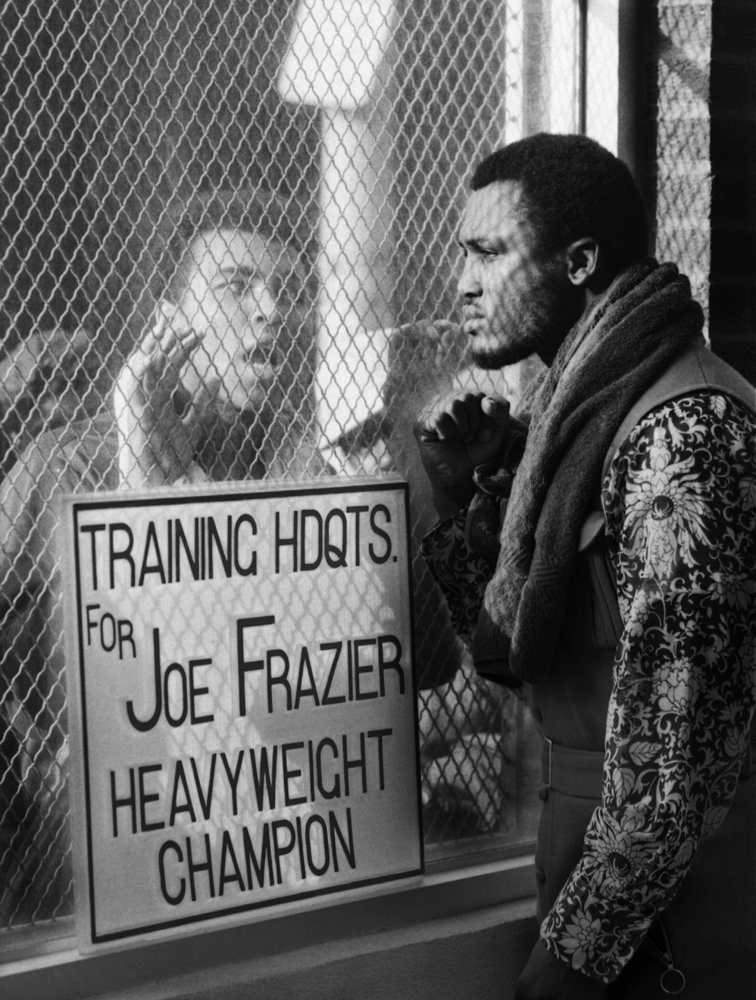
The universe of sport is built on rivalries. It doesn’t really matter if the rivalry involves two teams (Michigan and Ohio State, Liverpool and Man U), countries (the U.S. and Mexico in soccer, Russia and Canada in hockey) or individuals (Russell and Chamberlain, Evert and Navratilova and countless others). The tenor of each and every contest assumes a heightened pitch when rivals face one another.
Boxing rivalries, meanwhile, are different beasts entirely. In fact, “rivalry” might be too tame a word to encompass the intensity that enlivens a bout between, say, a Leonard and a Duran, or a Louis and a Schmeling. There needn’t be any bad blood or active dislike between the principals in order for the struggle to feel explosive; the object of a fight, after all, is to beat—literally and figuratively—the other guy. But no rivalry in the long history of the Sweet Science can touch Ali-Frazier for sheer drama, and at least something of the ferocity of their encounters certainly arose from genuine animosity between two very different personalities.
Here, LIFE.com pays tribute to the former champ, taking a close look at the one photograph that best captured the unbridgeable distance between Ali and Smokin’ Joe—a picture made at the very moment when their rivalry was first coming into full, violent flower.
LIFE’s John Shearer took the photo at Frazier’s training camp not long before the March 8, 1971, “Fight of the Century” title bout. Seen today, so many years later, the image is so freighted with symbolism that it’s hard to believe that Shearer—all of 24 years old at the time—didn’t somehow stage it.
[MORE: See the LIFE gallery, “Ali and Frazier in 1971: Remembering the Fight of the Century”]
Separated not merely by glass, but by a wire-mesh window (evocative, perhaps, of the legal battles that had entangled Ali for three long years), the two fighters face one another from mere inches away—and yet seem to exist in wholly different realities. Frazier, the champ, wears a flowery shirt that contrasts mightily with the huge, clenched fist he holds up to the glass, and with his regal gaze—a look that seems to casually and forever dismiss his challenger.
Ali, meanwhile, appears as a kind of antic, ghostly counterpoint—or irritant—to the calm, composed Frazier. If Ali traveled all the way to Frazier’s training headquarters to try and undermine the champ’s confidence or rattle his resolve, he clearly journeyed in vain. That Ali’s perpetual clowning annoyed the man who wore the heavyweight crown is beyond dispute. But far from knocking the champ off his game, Ali’s pre-fight characterizations of Frazier as an “Uncle Tom” and an “ugly gorilla” only served to give Frazier the ammunition he needed to train harder than he’d ever trained for any fight in his life.
A tough, driven sharecropper’s son from rural South Carolina was hardly going to be cowed by a showman like Ali—no matter how formidable the former Cassius Clay might be in the ring.
Years later, even after the two fighters—long-retired and semi-reconciled—occasionally appeared together at dinners and other ceremonies, Frazier would admit to a deep and abiding bitterness about Ali donning the mantle of Black Pride while dismissing Frazier as a pretender and a “Great White Hope.” Ali, of course, later downplayed the severity of his attacks on Frazier, casting them as little more than salvos of psychological warfare in the run-up to their first, great fight. But few who knew Ali in the late 1960s and early 1970s, when he was still in thrall to the Nation of Islam, doubted the sincerity of his barbs.
All these years later—after Frazier’s victory in their first fight, and Ali’s towering wins in the next two (including the legendary “Thrilla in Manila”); after Ali’s sad, Parkinson’s-related decline and Frazier’s death, at 67 years old, from liver cancer—all these years later, Shearer’s photograph of Frazier and Ali can still stop the viewer cold. It is a strange, beautiful portrait of two men who helped galvanize an era. Both, in their own ways, were great champions. But beyond that, it’s likely that neither would be considered quite the legend he is today if it weren’t for the other.
One can’t imagine Ali without Frazier, or Frazier without Ali. Like Bird and Magic, Borg and McEnroe, Palmer and Nicklaus, their rivalry enlarged them and, in ways that perhaps neither fighter ever fully grasped in the moment, helped define them for all time.
Ben Cosgrove is the Editor of LIFE.com

More Must-Reads from TIME
- Cybersecurity Experts Are Sounding the Alarm on DOGE
- Meet the 2025 Women of the Year
- The Harsh Truth About Disability Inclusion
- Why Do More Young Adults Have Cancer?
- Colman Domingo Leads With Radical Love
- How to Get Better at Doing Things Alone
- Michelle Zauner Stares Down the Darkness
Contact us at letters@time.com